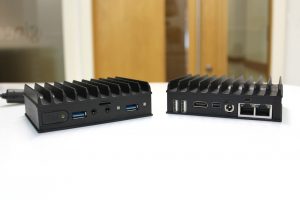
News
Intel quad-core Apollo Lake makes tiny PC IoT ready
 It measures just 112mm x 84mm x 34mm with an integrated heatsink.
It measures just 112mm x 84mm x 34mm with an integrated heatsink.
It is designed as a rugged process control unit and with 5W power consumption can be used for data collection, monitoring and processing applications.
The PC called Fitlet2 is available in two quad-core models: the E3950 is based on the Intel Atom Processor x7 Series with a CPU speed range of 1.6 to 2GHz and low power consumption from 5W.
A second model, the J3455 comes with the Intel Celeron Processor J Series and a CPU speed range of 1.5 to 2.3GHz. Both models use the Intel HD Graphics 505/500 processors.
Viru Patel, embedded computing manager, Tiny Green PC, writes:
“The Atom E3900 Apollo Lake processors were especially developed by Intel for industrial IoT applications and bring improved data communications and faster processing tasks thanks to 64-bit quad-core CPU performance.”
The Thermal design has been enhanced with new cooling fins and built-in heatsink, enabling the PC to support wider operating temperatures to a range of between -40 and +85 deg C. Energy efficiency has been improved with a low power consumption of 5W-15W (depending on CPU type, system load and application).
Standard interfaces include dual Ethernet ports, dual 4K video outputs (appreciable for CCTV and inspection applications), one microSD card slot, one serial port, two GPIO LED, two USB 3.0 ports and two USB 2.0 ports.
On top of that, the Function And Connectivity T-card (FACET card) provides further customisation options such as an additional dual Gbit Ethernet port, 4 extra USB 2.0 ports or simultaneous cellular modem and WI-FI/Bluetooth.
Max Fazilleau, product Engineer, Tiny Green PC writes:
“Intel has introduced Atom E3900 Apollo Lake Processors with a maximum RAM capacity of 8GB, but we have successfully tested in the lab with 16GB RAM, very impressive for a form factor this small, and will offer this option to customers.
“Thanks to M.2 mSATA, the booting time and the energy efficiency of the storage have improved. Features needed for remote management, such as wake-on-timer and remote power button, are also present as well as selectable power source (15-36V).”